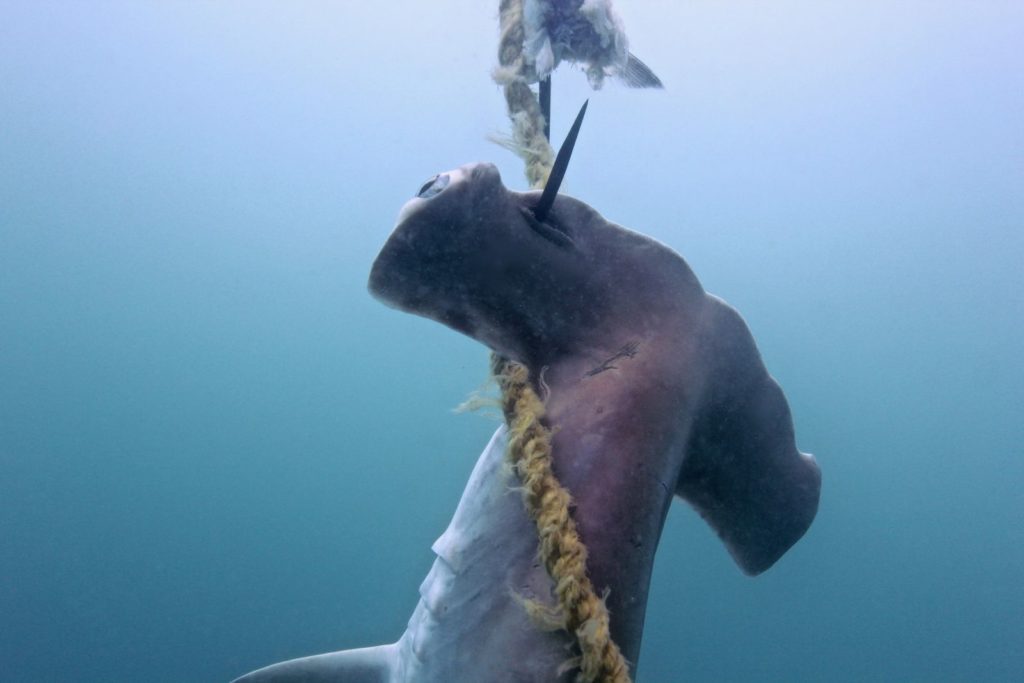One of the most important global meetings on wildlife trade has just wrapped up in Uzbekistan. It’s capital city Samarkand was where governments convened for the 20th Conference of the Parties (CoP20) to the Convention on International Trade in Endangered Species of Wild Fauna and Flora (CITES) to decide how international trade should be managed for some of the world’s most threatened...
The Queensland Government has sent an email response to nearly 17,000 people who have called for the end of its shark culling program in the Great Barrier Reef. Humane Society International, who has an ongoing legal action against the shark culling program in the Reef, would like to separate fact from fiction in this response sent by the Office of the Premier.
In the Premier’s response, she highlights that tourists from all over the world come to visit Queensland Beaches. We would like to remind the Queensland Government that tourists come to Australia and the Great Barrier Reef to enjoy its natural beauty and wildlife, not to see it shot dead or drowned on drumlines.
The office of the Premier mentions that there has only been one fatality at a protected beach in Queensland. We would like to remind the Premier that she forgot to mention that there have been 14 bites at beaches in the vicinity of drumlines in Queensland since 2000. This data can be found on the Shark Attack File by Taronga. Whether someone survives a shark incident or not depends on emergency response times and other environmental factors, not whether there are nets or drumlines installed. In other words, it was not the nets and drumlines that prevented the 14 bites from being fatalities.


The Premier’s response also said that “implementing measures to minimise the risk of shark attack on people is of key importance.” If the QLD Government is serious about the importance of measures to reduce the risk of shark bites, why was a spokesperson for the Premier quoted in media reports1 as saying she was not even considering an alert system after the two attacks at Cid Harbour? Why was no signage erected at the bay warning people of the first attack before the second took place? Why was there no warning about swimming in this particular harbour, which Whitsundays locals knew was not a good place to swim?
The Queensland Government also denied in its response that the aim of the program is to reduce shark numbers. No one believes this spin. There have been more than 10,500 sharks caught in the Shark Control Program since 2000. The Oxford dictionary definition of “culling” is the reduction of a wild animal population by selective slaughter. We refer the Premier to the Queensland Government’s application to the Great Barrier Reef Marine Park Authority for its shark culling program in the World Heritage listed area, where it states that the main method to reduce the possibility of shark attacks “is by the removal of large and potentially dangerous sharks in the immediate vicinity of 85 popular beaches along the Queensland coastline.”
The Premier’s response also mentions new technology being adopted in the state, and sights one example of pingers being installed in 2014 on shark nets in Queensland to reduce dolphin bycatch. There have been at least 32 dolphins killed in shark nets in Queensland since 2014. The pingers aren’t working.
Non-lethal measures adopted in NSW include a SharkSmart app, drone technology, shark tagging and releasing, and $400,000 in new technology and observation grants.
Non-lethal measures adopted in Western Australia include a personal shark deterrent subsidy, increased signage at beaches and grants for local councils to implement emergency response measures, drones, shark tagging and receivers, and a SharkSmart website which monitors shark activity and education resources for the public.
In comparison to NSW and Western Australia, the Queensland Government is not taking non-lethal measures seriously.


The Queensland Government finishes its response stating that “current evidence continues to indicate that traditional capture methods are the most effective measures to reduce the risk of shark attack.” There is not one scientific study to back this up. A 2016 Deakin University study found that shark nets are ineffective at protecting ocean users. We again point out to the Queensland Government that 14 bites have occurred in the vicinity of shark control equipment in Queensland since 2000.
We implore the Queensland Government to take a long hard look at its shark control program, which is under scrutiny now more than ever. It’s time to seriously invest in non-lethal technologies that will better protect ocean users and marine wildlife, instead of baiting, hooking and shooting sharks in the head. It’s 2018, and tourists from around the world might start to look for another location to holiday if they become further aware of this archaic culling program.
1 – Qld govt stands by shark cull decision, “A spokeswoman for Ms Palaszczuk told AAP that contrary to media reports, the government was not considering an alert system”September 24, 2018 https://www.news.com.au/national/breaking-news/qld-govt-stands-by-shark-cull-decision/news-story/7477801f2aa0e74713f608eb64a3656a


